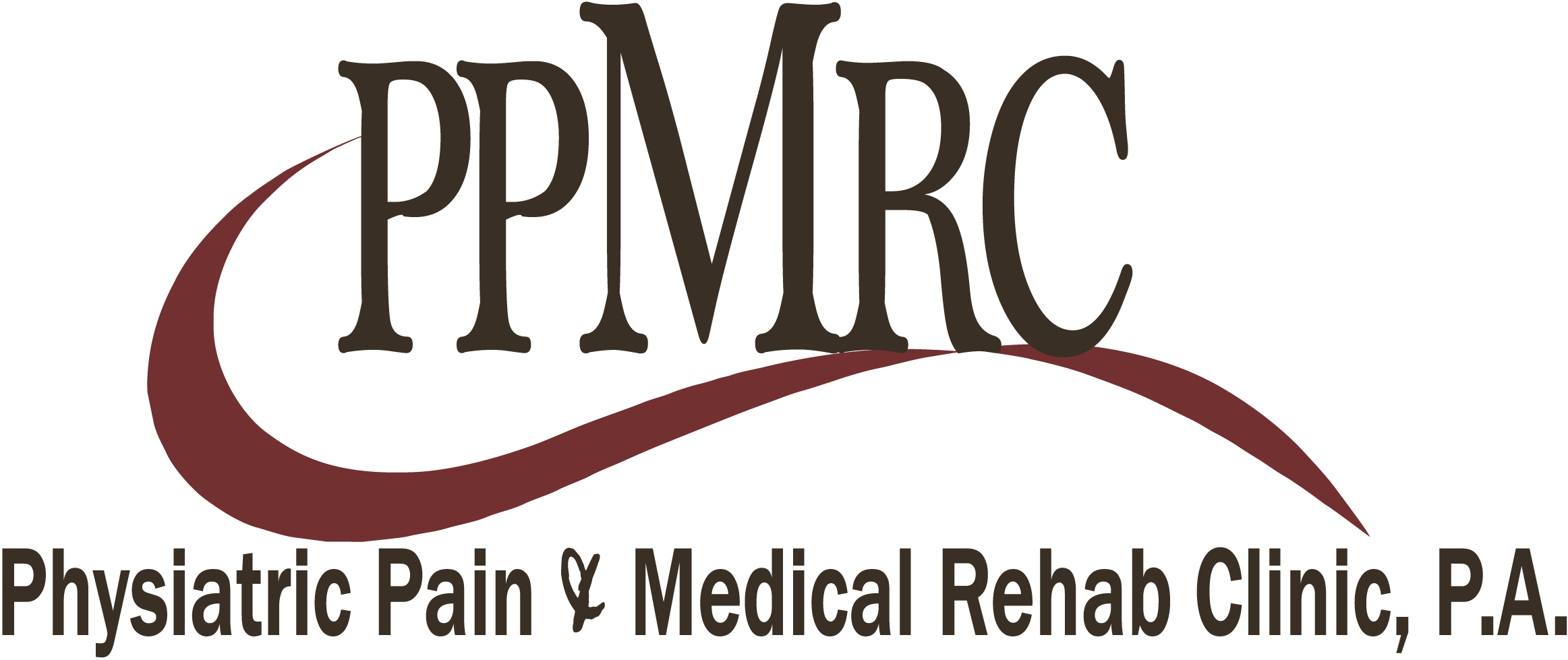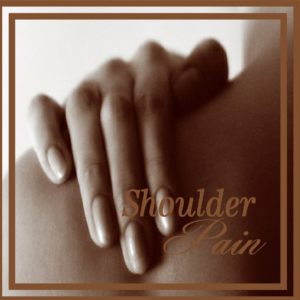Shoulder Pain
Common Causes Of Shoulder Pain:
What Causes Pain In My Shoulder?
A common cause of shoulder pain is soreness of the tendon (a cord that attaches a muscle) of the rotator cuff (the part of the shoulder that helps circular motion). Another common cause is soreness of the subacromial bursa (a sac of fluid under the highest part of the shoulder). You might have soreness after activities such as painting, lifting or playing a sport, which require you to lift your arms. Or you may not remember any specific injury.
The main joint in the shoulder is formed by the arm bone and the shoulder blade. The joint socket is shallow, allowing a wide range of motion in the arm. The rotator cuff is made up of 4 muscles that surround the arm bone. This cuff keeps the shoulder steady as the arm moves.
How does the rotator cuff get hurt?
The supraspinatus muscle rests on top of the shoulder. Its tendon travels under the bone on the outside of the shoulder (the acromion). This tendon is the one most often injured because of its position between the bones. As the tendon becomes inflamed (sore and swollen), it can become pinched between the 2 bones. The sac of fluid that cushions the tendon can also be damaged.
How do I know the rotator cuff is hurt?
If the rotator cuff is involved, the pain is usually in the front or outside of the shoulder. This pain is usually worse when you raise your arm or lift something above your head. The pain can be bad enough to keep you from doing even the simplest tasks. Pain at night is common, and it may be bad enough to wake you.
What can I do to help the pain?
Treatment should help your pain and help you restore your shoulder to normal function. Pain relief strategies include active rest (you can and should move your shoulder, but you shouldn’t do strenuous activities like lifting heavy objects or playing tennis). Physical treatments such as ultrasound and application of ice, nonsteroidal anti-inflammatory medicine such as ibuprofen (some brands: Advil, Motrin, Nuprin) or naproxen (brand name: Aleve) and, occasionally, an injection of anti-inflammatory steroids can also help.
Normal function can be restored with special exercises. The first step of rehabilitation therapy is simple range-of-motion exercises. By bending over and moving (rotating) your shoulder in large circles, you will help to avoid the serious complication of rotator cuff injury, called a frozen shoulder. These range-of-motion exercises are followed by resistance exercises using rubber tubing or light dumbbells. The final step is resistance training with weight machines or free weights.
What exercises should I do?
The following exercises may help you (see pictures 1, 2 and 3). Check with your doctor to see if you should do other exercises, too.
| Picture 1. Range of motion. Stand up and lean over so you’re facing the floor. Let your sore arm dangle straight down. Draw circles in the air with your sore arm. Start with small circles, and then draw bigger ones. Repeat these exercises 5 to 10 times during the day. If you have pain, stop. You can try again later. | |
| Picture 2. Rotator cuff strengthening. Use a piece of rubber tubing for these exercises. Stand next to a closed door with a doorknob. Loop the tubing around the knob. With your hand that is closest to the door, bend your arm at a 90° angle and grab the loop of the tubing. Pull the band across your tummy. At first, do one set of 10 exercises. Try to increase the number of sets as your shoulder pain lessens. These exercises should be done every day. | |
| Picture 3. Upper extremity strengthening. As your pain goes away, try adding a general upper body weight-lifting program using weight machines or free weights. Lie on your right side with your left arm at your side. With a weight in your left hand and your forearm across your tummy, raise your forearm. Keep your elbow near your side. | |
What else can I do to help this injury heal?
An aerobic exercise program will help improve the blood flow to the tendon or bursa. This helps reduce soreness. Smokers should quit smoking so more oxygen reaches the injured tendon. This will help the injury heal faster.
Will I need surgery?
Sometimes an injury that lasts a long time will cause the tendon to tear. This type of injury may need surgery. A tear of the rotator cuff is suspected when the pain goes on in spite of a good rehabilitation program or when there is weakness in certain motions of the arm.
What is Shoulder Bursitis?
The shoulder bursa can become inflamed from repetitive motion of the shoulder. Shoulder bursitis often occurs in sports with overhead activities such as swimming, tennis, or throwing. It may also occur in occupational activities such as painting or carpentry.
What are the symptoms?
You have pain on the outer front side of your shoulder. Your shoulder may hurt when you lift your arm above your head. The outer side of your shoulder may become swollen and may at times feel warm.
How is it diagnosed?
Your health care provider will review your symptoms and examine your shoulder.
How is it treated?
Treatment may include:
- ice packs on your shoulder for 20 to 30 minutes every 3 to 4 hours for 2 to 3 days or until the pain goes away
- anti-inflammatory medicine or other pain medicines
- an injection of a corticosteroid medicine into the bursa to reduce the inflammation and pain
- exercises to help in your recovery.
How long will the effects last?
The length of recovery depends on many factors such as your age, health, and if you have had a previous injury. Recovery time also depends on the severity of the injury. A bursa that is only mildly inflamed and has just started to hurt may improve within a few weeks. A bursa that is significantly inflamed and has been painful for a long time may take up to a few months to improve. You need to stop doing the activities that cause pain until your shoulder has healed. If you continue doing activities that cause pain, your symptoms will return and it will take longer to recover.
When can I return to my normal activities?
Everyone recovers from an injury at a different rate. Return to your activities will be determined by how soon your shoulder recovers, not by how many days or weeks it has been since your injury has occurred. In general, the longer you have symptoms before you start treatment, the longer it will take to get better. The goal of rehabilitation is to return you to your normal activities as soon as is safely possible. If you return too soon you may worsen your injury.
You may safely return to your activities when:
- Your injured shoulder has full range of motion without pain.
- Your injured shoulder has regained normal strength compared to the uninjured shoulder.
How can I prevent shoulder bursitis?
Be sure to warm up properly and stretch your shoulder before such activities as throwing, playing tennis, or swimming. If your shoulder begins to hurt during these activities, you may need to slow down until the pain goes away.
Shoulder Bursitis Rehabilitation Exercises
You may do these exercises when your pain has improved.
- Scapular range of motion: Stand and shrug your shoulders up and hold for 5 seconds. Then squeeze your shoulder blades back and together and hold 5 seconds. Next, pull your shoulder blades downward as if putting them in your back pocket. Relax. Repeat this sequence 10 times.
- Wand exercises
- Flexion: Stand upright and hold a stick in both hands, palms down. Stretch your arms by lifting them over your head, keeping your elbows straight. Hold for 5 seconds and return to the starting position. Repeat 10 times.
- Extension: Stand upright and hold a stick in both hands behind your back. Move the stick away from your back. Hold the end position for 5 seconds. Relax and return to the starting position. Repeat 10 times.
- External rotation: Lie on your back and hold a stick in both hands, palms up. Your upper arms should be resting on the floor, your elbows at your sides and bent 90°. Using your good arm, push your injured arm out away from your body while keeping the elbow of the injured arm at your side. Hold the stretch for 5 seconds. Repeat 10 times.
- Isometrics
- External rotation: Standing in a doorway with your elbow bent 90° and the back of your hand pressing against the door frame, attempt to press your hand outward into the door frame. Hold for 5 seconds. Do 3 sets of 10.
-
Internal rotation: Standing in a doorway with your elbow bent 90° and the front of your hand pressing against the door frame, attempt to press your palm into the door frame. Hold for 5 seconds. Do 3 sets of 10.
-
Tubing exercise for external rotation: Stand resting the hand of your injured side against your stomach. With that hand grasp tubing that is connected to a doorknob or other object at waist level. Keeping your elbow in at your side, rotate your arm outward and away from your waist. Make sure you keep your elbow bent 90 degrees and your forearm parallel to the floor. Repeat 10 times. Build up to 3 sets of 10.
-
Scaption: Stand with your arms to your side and with your elbows straight. Slowly raise your arms to eye level. As you raise your arms, they should be spread apart so that they are and only slightly in front of your body (at about a 30 degree angle to the front of your body). Point your thumbs toward the ceiling. Hold for 2 seconds and lower your arms slowly. Do 3 sets of 10. Hold a soup can or light weight when doing the exercise and increase the weight as the exercise gets easier


